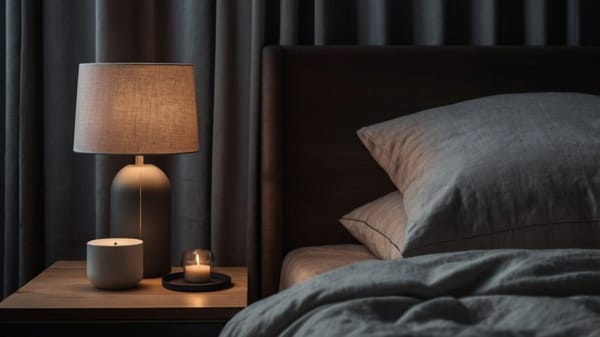The Surprising Role of Naps in Stress Recovery
Unlock faster stress recovery with strategic naps. Boost focus, energy, and resilience with simple, science-backed tips you can use today.

Ever wonder if there’s a faster way to shake off stress and recharge your energy? Forget the extra coffee run.
The real power move is a nap—short, simple, and science-backed. Strategic naps can reset your brain, boost focus, and kickstart recovery almost instantly.
If you’re new to better sleep habits and want a game-changing tool that fits easily into your day, it’s time to rethink what a quick rest can really do for you.
Why Stress Wrecks Your System (and How Naps Fight Back)
When stress hits, your body doesn’t just "feel tense"—it shifts into survival mode. Cortisol spikes. Your heart races. Blood flow gets rerouted away from digestion and recovery, straight into fight-or-flight mode.
Left unchecked, this response drags down your focus, drains your energy, and slows down recovery at a cellular level. You burn out faster without even realizing it. Napping acts like an emergency brake for this cycle. Studies out of Harvard and
Stanford show that short periods of sleep deactivate stress circuits in the brain, lower cortisol levels, and restore heart rate variability—a key measure of recovery and resilience.
You don’t need hours to unlock these benefits. Even a 20-minute nap can trigger deep shifts in your nervous system that push you back toward balance and real recovery.

Naps Aren’t "Lazy"—They’re Evolutionary
Humans are biologically wired for biphasic sleep: one long stretch at night, one short rest during the day.
In cultures where afternoon naps (siestas) are still a thing, rates of heart disease, depression, and chronic stress are dramatically lower.
It’s not magic. It’s biology. Your body expects a drop in energy levels after midday. Fighting it with caffeine and grit alone is like trying to outswim a rip current.
Working with your natural rhythms, not against them, is the real shortcut to better performance, faster recovery, and stronger focus.
How to Time It Right (and Actually Feel Good After)
Timing and duration are what separate game-changing naps from groggy disasters. Here’s the science:
- Early Afternoon Only: Aim between 1 PM and 3 PM. Nap too late, and you’ll disrupt your nighttime sleep. Nap too early, and your body isn’t ready yet.
- 20-Minute Limit: Stick to 10–30 minutes. This window hits light sleep stages (N1 and N2), where you get recovery benefits without sinking into slow-wave sleep that triggers post-nap "sleep inertia"—that foggy, heavy feeling.
NASA’s research on pilots found a 26-minute nap improved performance by 34% and alertness by 54%. Precision matters. Treat your nap like a high-value pit stop, not a crash landing.
Set Yourself Up for Nap Success
You don’t need a blackout-curtained sleep sanctuary. You need a system that tells your body, "it's safe to relax now." Here’s what works:
- Darken the Room: Light signals your brain to stay alert. Lowering the brightness helps shift you toward a recovery state. Even a simple sleep mask can make a difference.
- Quiet the Noise: Use white noise, pink noise, or calming playlists. Anything repetitive and low-key helps your brain disengage faster.
- Cool It Down: A slightly cooler environment signals your body it’s time for rest. Drop the thermostat or use a fan if you can.
Bonus tip: If you really want to amplify the effects, try "caffeine naps"—drink a small cup of coffee right before lying down.
It takes about 20 minutes for caffeine to hit your system, meaning you wake up with an extra boost of alertness without feeling wired.
Napping with a Purpose
Random naps won’t get you far. Purpose-driven naps will. Use naps strategically after high-stress events or before high-demand performance.
Think: a major client meeting, a hard training session, prepping for exams, recovering after travel. Each nap becomes a recovery tool, not just downtime. It’s proactive, not reactive.
If you’re struggling to stay consistent, pair your nap with a consistent cue—right after lunch, right after a workout, or during the same window every workday. Habits form faster when you anchor them to something you already do.
The Payoff: Bigger Than You Think
Start building a smart nap habit, and you’ll start seeing compound gains across your entire life:
- Faster mental recovery after stress hits
- Sharper memory, learning, and decision-making
- Improved emotional regulation (less overreacting, more steady focus)
- Lower baseline inflammation and stronger immune resilience
- More consistent physical recovery, especially after workouts or injury
Think of naps as an investment. Every short, smart nap you take is energy in the bank—ready for when you need it most.
Final Thoughts: Start Winning the Recovery Game Today
Stress isn’t going anywhere. Deadlines, demands, and curveballs will always be part of the game. But how you recover determines how you perform—and how you feel.
A smart, strategic nap gives you a reset button most people don’t even realize they have. It’s low effort, high reward, and fully backed by some of the best sleep science out there.
So don’t wait. Pick a window tomorrow. Set a 20-minute timer. Give yourself permission to reset. Own your recovery. Own your energy. Start napping smarter—starting now.




